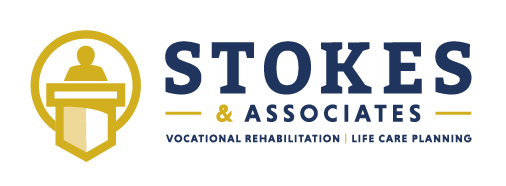Vocational and Rehabilitation Prognosis
A prognosis is the foretelling from signs and symptoms. Several categories of prognoses are used in an attempt to opine about the future vocational rehabilitation of evaluees. These categories are as follows:guarded; poor; fair; good; and excellent.
Some of the variables used in forecasting include: age and work-life expectancy; education and training; work experience; wages, skills and skill level or job classification; physical capacity and the attainment of maximum medical improvement; and physical demands of jobs. Other variables to consider include: motivation; vocational test scores; the evaluee’s goals and objectives; propensity to work; and internal or external locus of control. Additional variables include vocational and medical adjustment to impairment and the psychological state of the evaluee.
A “guarded” prognosis is when the person formulating the opinion simply does not have enough information to know or to foretell what the outcome may be. For example, suppose an evaluee has undergone a recent surgery and the recovery period has not been completed. This could lead to a guarded prognosis.
A “poor” prognosis suggests the evaluee has very few signs or symptoms that would indicate a high likelihood of attaining or maintaining gainful employment. Suppose the evaluee is of advanced age and has little education and significant physical limitations. This could lead to a poor prognosis.
A “fair” prognosis indicates that there are some signs and symptoms which indicate that the evaluee may likely be rehabilitated. Consider that the evaluee is 50 years old and has an 11th-grade education. Also, consider that the evaluee has light physical capacities with a work history that demonstrates they are capable of skilled labor. This scenario may lead to a fair prognosis.
A “good” prognosis is one in which an evaluee has many signs or symptoms that would lead the evaluator to believe that the evaluee could be rehabilitated. In this example imagine that the evaluee is 30 years old, has a high school diploma, completed vocational school and is certified as an instrument technician. Also, consider that the evaluee can lift 50 pounds occasionally and 25 pounds frequently. This opinion may be that the evaluee has a good prognosis.
An “excellent” prognosis is one in which the evaluee has many indicators that they would achieve successful rehabilitation. Oftentimes when providing an excellent prognosis opinion, the evaluee has achieved maximum medical improvement and is working, or the evaluee is a younger individual, has a high level of education or training, good work history, excellent skills, high vocational test scores, and minimal limitations. In this case, the evaluee may be able to return to work in the job they had at the time of injury.
A framework for opining about a prognosis can help to determine rehabilitation potential, and help stakeholders determine the likely outcomes in personal injury cases. Providing a prognosis for the vocational and rehabilitation potential of an injured worker is not an exact science but using an organized framework with identifiable and reliable qualitative categories can be helpful in identifying the evaluee’s likely vocational potential.
A knowledgeable and experienced vocational expert and life care planner engaged to evaluate your case needs will lead to appropriately assessing vocational prognosis and future medical care needs.
We offer complimentary consultations concerning "hypothetical matters."
To strategize with one of our vocational experts or medical cost projections experts at Stokes & Associates please call David Barrett at 504-454-5009, visit our website, www.stokes-associates.com or email dbarrett@stokes-associates.com.
Larry S. Stokes, Ph.D.
Aaron Wolfson, Ph.D.
Lacy Sapp, MHS, CRC, LPC, LRC, CLCP
Todd Capielano, M.Ed., LRC, CRC, LPC, CLCP
